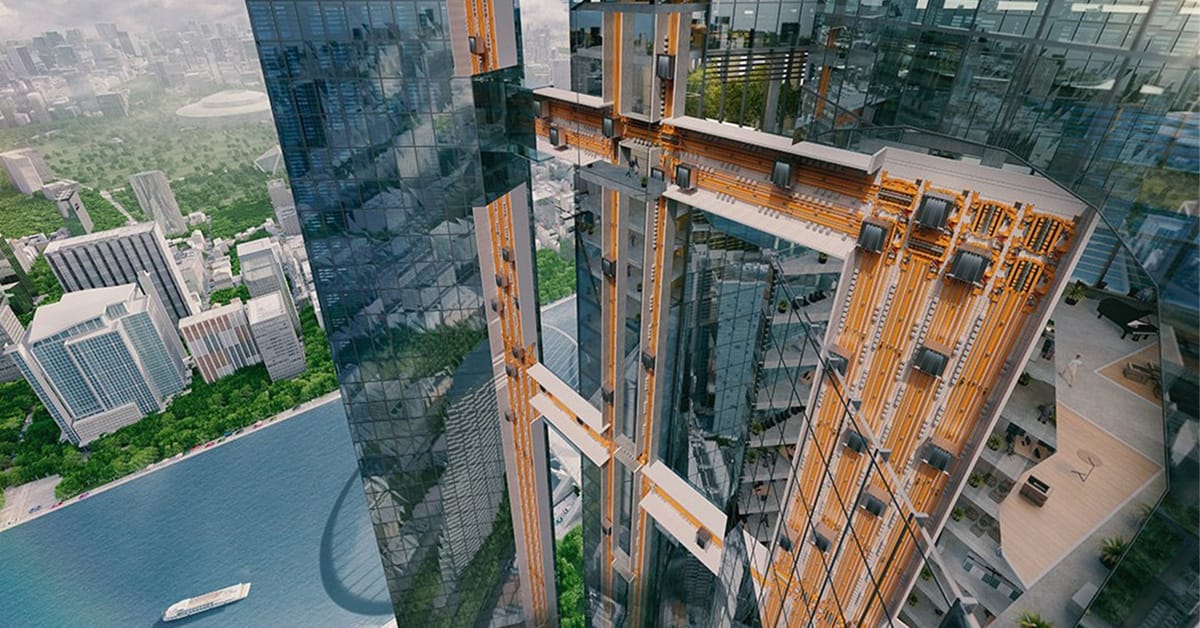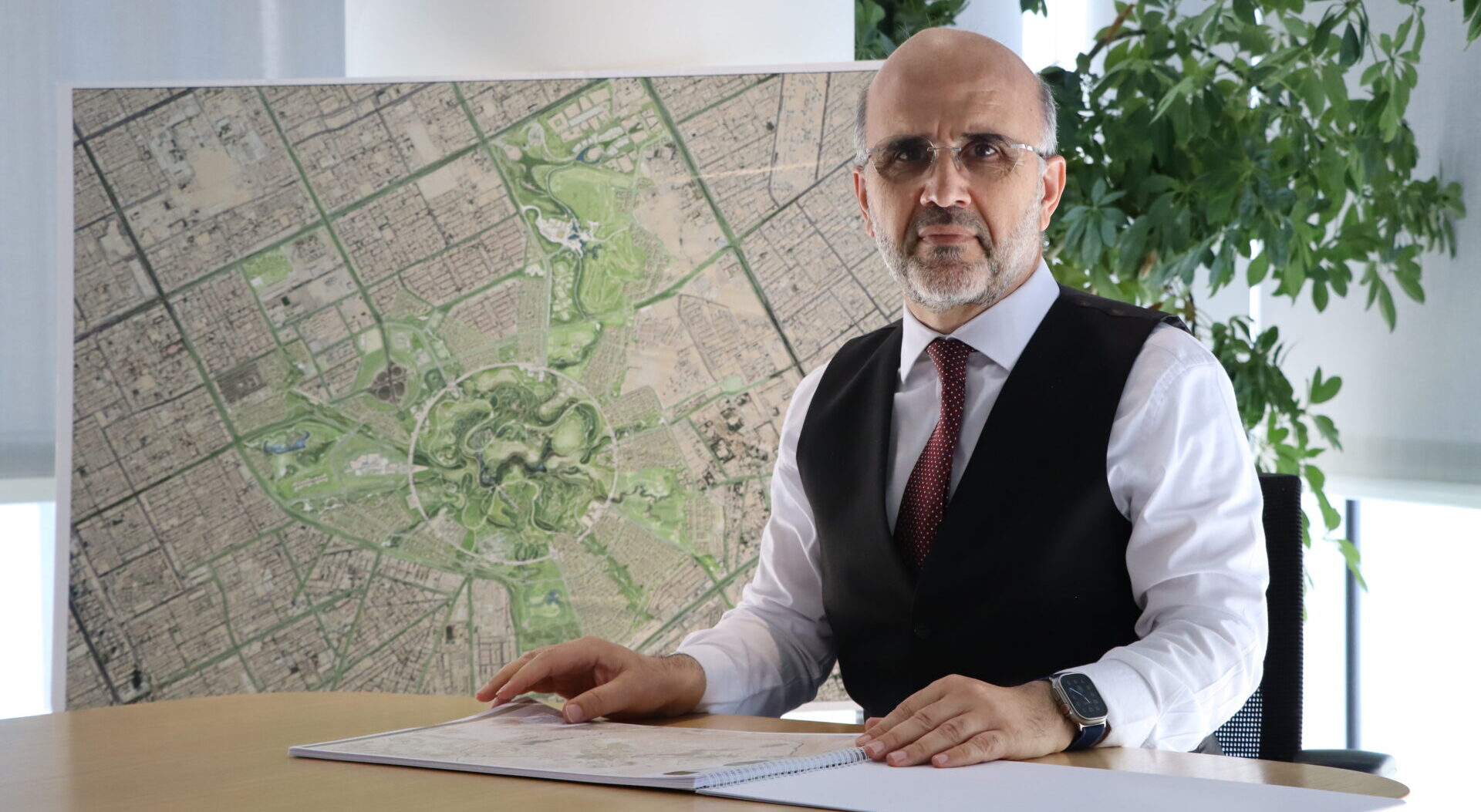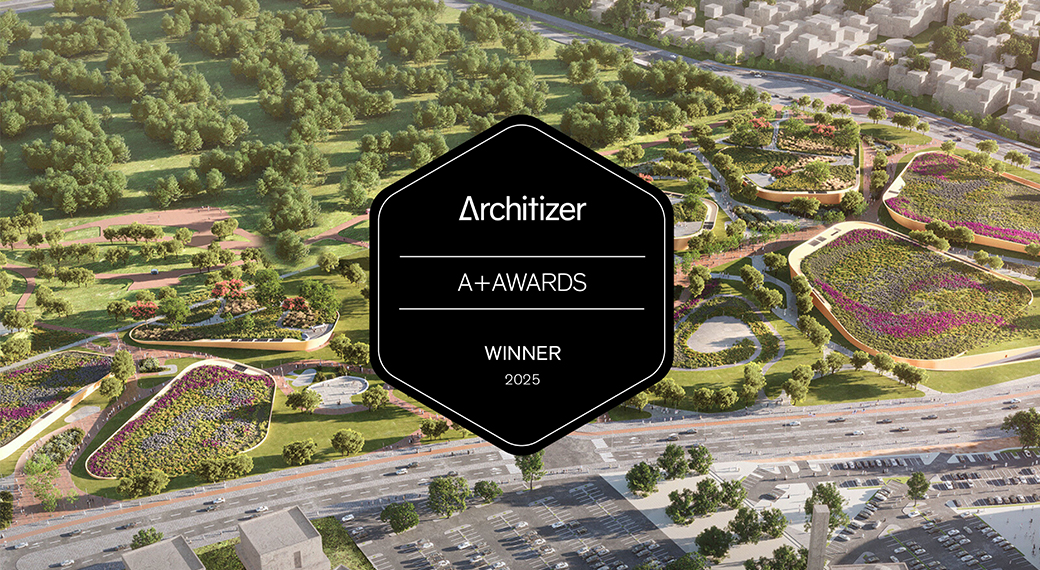 Two-dimensional elevator system. Photo © Thyssenkrupp
Two-dimensional elevator system. Photo © Thyssenkrupp
In 1854, the invention of the elevator heralded the invention of the skyscraper. Today, a new, dramatically redesigned “two-dimensional” elevator system may once again transform our skylines.
Structural steel framing made it possible for our buildings to reach great heights, but before the elevator no one wanted to reach any higher than five stories — and even that was asking a lot. In the 1920s and ’30s high-rises rose higher thanks to the elevator. In the book Delirious New York, architect Rem Koolhaas describes the elevator as “the great emancipator of all horizontal surfaces above the ground floor.” The resulting skyscrapers typically consisted of repeating floor plates.
That design logic may soon be a thing of the past, however, as Industrial design group ThyssenKrupp have designed a new multi-directional people-mover, appropriately known as MULTI, that promises “no limits in height” and “no limits in shape.”
Buildings are now reaching heights greater than 400 meters, and architects and engineers are reaching the limits of what can be safely built using traditional cable elevators. The introduction of “sky lobbies,” where users can transfer from express to local elevators; and “stacked elevators,” in which two cars travel independently in the same shaft, have helped to increase capacity and reduce travel time. But the cable elevator is still a considerable limitation. It not only restricts a building’s height and adds considerable weight, it also requires a relatively large floor area. Another limitation? Cable elevators can only go in two directions.
Related: Turning constraints into design opportunities – CMA Tower, Riyadh
MULTI’s cable-less design aims to rectify all these limitations. The MULTI system eschews cables in favor of elevator cars equipped with linear motors that can move vertically and horizontally along a magnetic track system. The cars change direction with the assistance of rotating “exchange” plates located at the intersection of perpendicular tracks. It’s based on technology developed for magnetic levitation trains and, like those trains, MULTI elevators promise speedy service, with elevators available every 15-30 seconds and a relative increase in transport capacity by up to 50% according to one early estimate.
And MULTI offers benefits beyond speed. The system requires less space for elevators shafts, meaning an increase in leasable area. The compact system could move cars on a loop through a building, or move cars between buildings — above or even below ground. While skywalks and pedestrian bridges have connected buildings for decades, the horizontal elevator offers a more efficient means of circulation that could change the way architects think about skyscraper design.
A functioning MULTI system was installed this summer in a purpose-built test tower in Rottweil, Germany, and the system will have its public debut in 2019 in the East Side Tower in Berlin.
Before it can be widely employed, the system must overcome several challenges — primarily related to elevator regulations and buildings codes, which will likely have to be rewritten to accommodate this radical system that pushes the very definition of “elevator.” But our definition of buildings is changing too. As cities are becoming denser, mixed-use buildings are becoming more common. It’s no longer unusual for a single building to contain a hotel, condominium, office tower, and shopping mall. Buildings are becoming like cities and ThyssenKrupp believe it’s time these “cities” had their own metro. MULTI may be incorporated into existing cities as well. ThyssenKrupp imagines their new technology tying into traditional public transit systems, perhaps linking buildings directly to subway stations to help solve accessibility issues and efficiently increase station capacity.
In short, MULTI is a reinvention of the elevator that may end up reinventing the skyscraper. And perhaps even the entire city.







